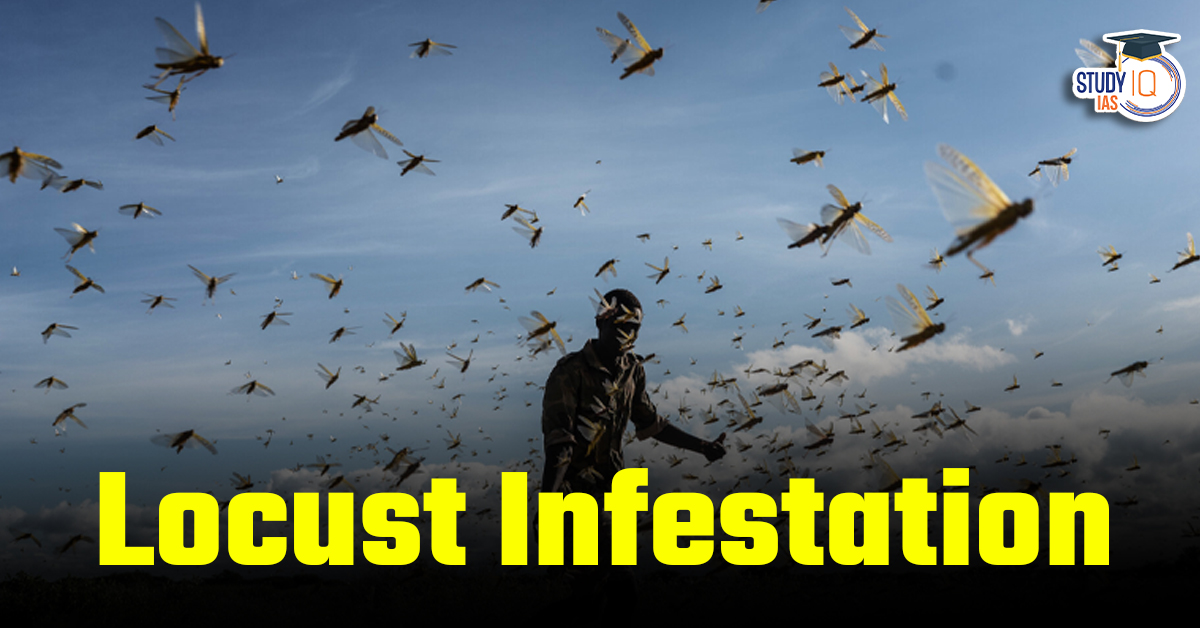Table of Contents
Context: Scientists have identified a pheromone that triggers locust swarming and discovered a method to block it, offering a breakthrough in controlling locust outbreaks.
About Locust Infestation
What are Locusts?
Locusts are grasshoppers that can transform into a swarming phase, forming massive groups that migrate and destroy crops.
Swarming Trigger
Scientists have identified a specific pheromone called 4-vinylanisole (4VA), which causes solitary locusts to gather and swarm.
Impact of Infestation
- A single locust swarm can consume as much food as 35,000 people in one day.
- Swarms devastate crops, pasture, and vegetation, leading to food insecurity and economic loss.
- Countries in Africa, the Middle East, and South Asia are especially vulnerable.
Favourable Conditions
- Triggered by heavy rains, cyclones, and moist soil, which promote locust breeding.
- Climate change may increase the frequency of such conditions.
How to Prevent or Control Locust Infestation
Pheromone Blockage (Latest Discovery)
- Scientists have found a molecule that blocks the 4VA pheromone, potentially preventing the formation of swarms.
- This opens doors for targeted, eco-friendly pest control in the future.
Chemical Spraying
- Aerial or ground spraying of organophosphate pesticides is commonly used during outbreaks.
- Effective mainly in the early hopper stage before swarming.
Biological Control
- Use of biopesticides like Metarhizium anisopliae, a fungus that infects and kills locusts.
- Environmentally safe alternative to chemical pesticides.
Surveillance & Early Warning
- Real-time monitoring using satellites, drones, and field patrols.
- Systems like FAO’s Desert Locust Watch issue alerts to affected countries.
Egg Site Management
- Destroying or disturbing soil in breeding grounds prevents locusts from maturing.
International Coordination
- Since swarms cross borders, effective control needs regional collaboration (e.g., between India, Pakistan, and African nations).


 Bonnet Macaques: Habitat, Features, Beha...
Bonnet Macaques: Habitat, Features, Beha...
 Periyar Tiger Reserve, Map, Flora, Fauna...
Periyar Tiger Reserve, Map, Flora, Fauna...
 Project Cheetah in India, Objectives, Ch...
Project Cheetah in India, Objectives, Ch...

























